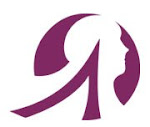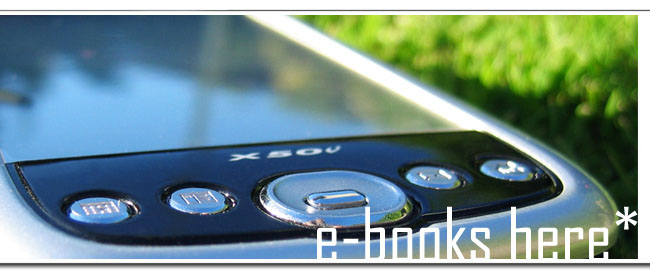After letting Kindle dominate the e-book reader market for two years, Sony has fired a huge salvo in return – at least in the US.
The new Sony Reader Daily Edition adds wireless 3G, increase the size of the touchscreen to seven inches and supports a feature called Library Finder that will let users borrow e-books from their local libraries, at no cost.
The Reader Daily Edition will cost $400 and is expected to be in US stores in December. A spokesman for Sony said today that it intends to launch the device in the UK "when the market is right", but it has not yet planned a release date.
Reception for the new device in the US was very positive. "Sony has given the market what everyone was waiting for in terms of a wireless device," says Sarah Rotman Epps, a Forrester analyst who has been covering e-readers. "Not only that, they have gone one step further, and shown their latest product is no copycat of the Kindle."
Since Amazon introduced the Kindle to the US market in 2007, e-readers have become a surprisingly hot consumer product category. Though Sony was the first to launch an e-reader, the company has lagged behind its biggest rival. One key missing feature was wireless connectivity: until now, Sony Reader users who wanted to purchase or download books had to connect their e-reader to a PC using the USB connection. By contrast, the Kindle has always offered free over-the-air wireless book downloads. Amazon also aggressively pursued publishers, enabling the company to offer a wide selection of popular books for download.
Now Sony is fighting back on both the features and the content fronts.
The Reader Daily Edition offers portrait and landscape orientation. In portrait mode, about 30-35 lines of text are visible, offering an experience similar to that of a printed paperback book, says the company. The device has enough internal memory to hold more than 1,000 standard e-books, says Sony, and it has expansion slots for memory cards.
The Reader Daily Edition is the third new e-book reader in the company's line-up. The other two, which will be available for pre-order in the UK later today, will be a five-inch-screen device called the Sony Reader Pocket and a six-inch touchscreen model, the Sony Reader Touch. UK pricing is yet to be confirmed, but in the US they cost $200 (£120) and $300 (£180) respectively.
Aside from technical specifications, Sony Reader's second big weakness compared to the Kindle has been access to content. Amazon's position as a leading online retailer of books helped the company offer a wide selection of e-books to Kindle buyers that were competitively priced and easy to download.
To match that, Sony has partnered with OverDrive, a distributor of e-books to libraries, to offer its customers easy access to the local library's collection of e-books. Sony Reader customers can use the company's Library Finder software and check out e-books with a valid library card. Users will have to download the books to a PC first and then transfer them to the Reader. The e-books will expire at the end of the 21-day lending period.
Sony has also said it will adopt the open EPub format in a move that allows consumers to purchase or download books from the Sony store and read them on any EPub-compatible device. In contrast, Amazon uses a proprietary file format that only allows users to read books they've bought using the Kindle, or Amazon-sanctioned Kindle software.
"From the beginning, we have said that an open format means more choice for consumers," says Steve Haber, president of Sony's Digital Reading Business Division. "Now, readers can shop around for what interests them rather than be locked into one store."
Still, it won't be easy to beat Amazon, says Epps.
"Sony is number two in the market and though they are in a strong position to close the gap with Amazon over the holiday season, I expect Amazon to still be the market leader in early 2010," she says.
"Amazon has built a very strong relationship with e-book buying consumers that were the first wave of adopters of electronic readers," says Epps.
"Consumers are now split between the small pocket-sized devices with five-inch or six-inch screens and the larger screen eight-inch to ten-inch screen readers," says Epps. "But it is not over yet. The market is still evolving."
Download ebooks on http://www.frenchtheory.com/ - See that post with different algorithms in metabole - See the journal French Metablog with today different posts -PHONEREADER Library - - Jean-Philippe Pastor
skip to main |
skip to sidebar

Blogger
Google Book Search
BlogRing

Labels
- 3G (2)
- adoption (1)
- aggregation (1)
- amazon (4)
- app (2)
- apple (2)
- application (3)
- barnes (1)
- bebook (1)
- benefit (1)
- bibliothèque (2)
- blog (1)
- browsing (1)
- building (1)
- cellular (1)
- changing (1)
- classics (1)
- click (1)
- color (1)
- commerce (1)
- communication (1)
- companion (1)
- connecté (3)
- connected (2)
- content (3)
- contract (1)
- control (2)
- converter (1)
- copyright (1)
- couleur (1)
- critics (1)
- device (10)
- distribution (3)
- download (2)
- drm (4)
- e-lit (1)
- ebook (18)
- economics (3)
- engine (1)
- epub (2)
- europeana (1)
- experience (1)
- feed (1)
- file (1)
- format (2)
- french (2)
- Google (8)
- habit (1)
- hypertext (3)
- idea (1)
- iliad (1)
- in-store (1)
- industry (1)
- innovation (2)
- internet mobile (6)
- iphone (11)
- irex (2)
- japon (1)
- journalism (1)
- keyword (1)
- kindle (12)
- library (3)
- license (1)
- link (1)
- linking (1)
- live (1)
- livre numérique (4)
- livrel (1)
- manga (1)
- marketing (1)
- media (3)
- method (1)
- microsoft (1)
- newspaper (2)
- note (1)
- now (1)
- Orange (3)
- ownership (1)
- paper (1)
- pdf (1)
- periodical (1)
- phonereader (9)
- phrase (1)
- platform (1)
- poetics (1)
- presse (1)
- print (3)
- problem (1)
- provider (1)
- prs (1)
- publisher (6)
- publishing (5)
- reader (15)
- reading (5)
- recession (1)
- resource (1)
- retailing (1)
- revolution (1)
- right (1)
- rss (1)
- sales (1)
- savings (1)
- scanning (2)
- screen (2)
- search (1)
- seller (1)
- sensitive (1)
- seo (1)
- service (1)
- SFR (2)
- shop (2)
- site (1)
- smartphone (1)
- software (5)
- sony (8)
- standart (2)
- stanza (4)
- startup (1)
- store (2)
- strategy (1)
- sucess (1)
- tablet (1)
- telephone (2)
- template (1)
- terminal (3)
- theory (1)
- video (2)
- vision (2)
- web (1)
- wifi (5)
- wireless (5)
- word (1)

